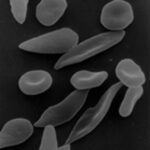Most of us know mistletoe as that mischievous holiday berry-cluster that encourages us to kiss if found beneath one. This current tradition is only a part of mistletoe myths throughout the ages. Druids of Celtic myths used mistletoe to cure disease and poison, believed it had spiritually protective qualities and also thought it to grant fertility to all living creatures. Cutting it required the use of a golden sickle, and the harvester could not let a single berry touch the ground, or it was believe to be tainted.
Vikings believed mistletoe was responsible for the resurrection of their god, Balder, whose overjoyed mother would kiss anyone who passed under a mistletoe tree for protection.
Many of the more pagan practices were abandoned in lieu of Christianity. However, it was the Victorians who revived the tradition of the mistletoe’s legend of love and fortune, and the reason that we believe in kissing beneath one, today. This custom of Christmas cheer has been referred to again in again in many of our holiday songs from 1943 to the present.
Mistletoe is a parasitic plant that attaches itself to soft barked trees. Because of this, it is sometimes referred to as the vampire plant because it can probe beneath the tree bark to drain water and minerals. Mistletoe is a very hardy plant and will grow wherever its common host trees will grow, therefore upkeep on the plant is very minimal and mostly relies on its host tree’s health.
If you are interesting in growing and harvesting your own mistletoe, here are some instructions to get you started:
First off, you’ll have to get a cut of fresh mistletoe. Keep in mind that “Christmastime” mistletoe is not an ideal time to get a cut. If this is the only time you can secure your cut, though, detach the berries and leave them in area protected from the elements, such as a shed, until around the middle of February. When you are ready to use them, they can be re-hydrated by submersing them in water for a few hours
You must then pick a “host” tree. Your best bet will be an apple, poplar or lime tree. Many shrubs of the Rosaceae family also work well.
To plant mistletoe, either smear the berries onto the branch of the chosen tree or make a slit in the bark and squeeze the seeds out of the berries into it, making sure some of the sticky viscin stays with it.
Whether you use the smearing technique or the slitting one, you must separate each seed by about 1.5 meters. Plant them up the tree, on the side and/or under the branch. (Make sure the branch is at least 20 mm in diameter.) If you choose to monitor your berries’ progress more closely, you can mark each one with a string so that you can find them more easily.
Plant as many berries as you can, as you run the risk of a good many of them being eaten by wildlife. Also, if you plan on having future berries, you will need at least two mistletoe plants to grow.
Mistletoe germination tends to happen quickly. You should see part of the germinating seedling (called a hypocotyl) emerge. This is the primary organ of extension of the young plant. You will see it start to bend toward the bark in an attempt to contact it.
This is when your mistletoe plants are most at risk from birds and other hungry wildlife. If the plants manage to make a host connection and do not die off from various elements, by the next February, you will have your own mistletoe plant. When you cut your mistletoe from the host tree, new plants will usually sprout from the haustoria (root-like growth within the tree’s tissue). Once it has begun to grow, cut back each year to stop it from growing too big and harming the tree. The mistletoe and its host tree should be able to coexist healthily for years to come, providing you with holiday cheer every season.





